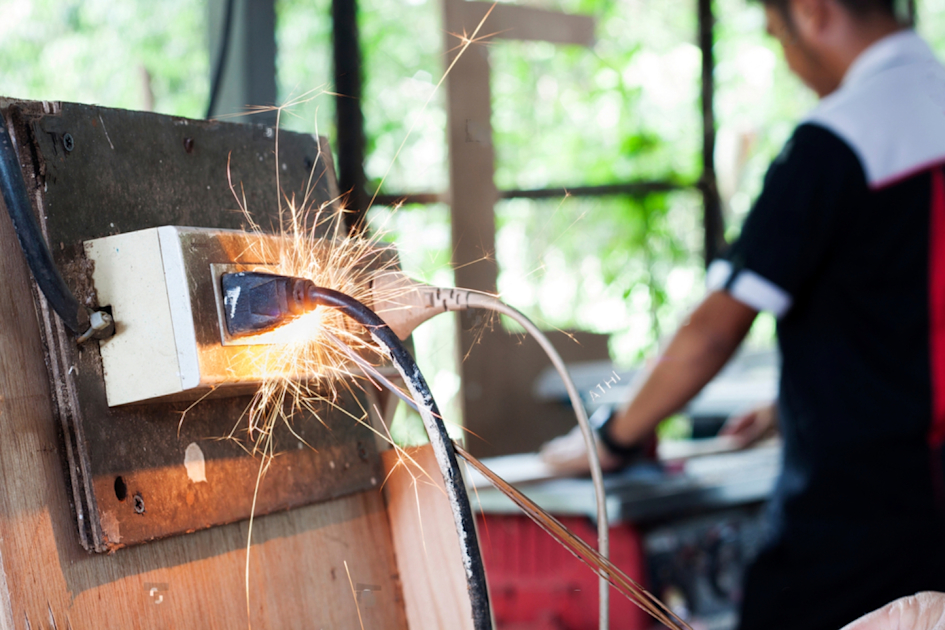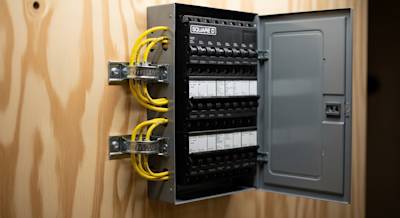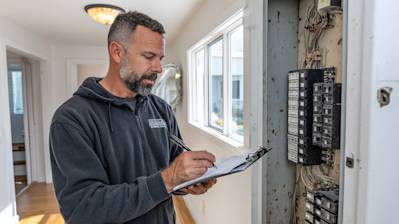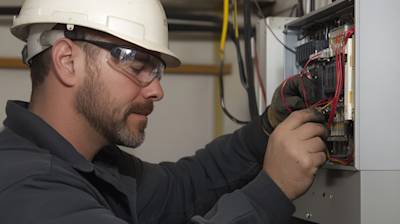Short Circuits
Electricity has become an indispensable part of our lives, but when a short circuit occurs, it can pose a threat to both life and property. To ensure the safe use of electrical appliances and devices, it's essential to understand the causes, prevention methods, and solutions related to short circuits. In this article, we will explore these aspects in detail with the help of Sagan Electric, a trusted residential electrical contractor in Sacramento.
What Is a Short Circuit?
A short circuit occurs when there is a low resistance between the two conductors supplying electrical power to a circuit. This leads to excessive current flow and voltage, causing electricity to follow the shortest path and resulting in a short circuit. Short circuits can cause damage, small-scale explosions, and even fires. Some short circuits are accidental, while others may be intentional, such as when using a voltage-sensing crowbar circuit protector.
Types of Short Circuits
It's important to familiarize ourselves with the different types of short circuits:
1. Normal Short Circuit
This type of short circuit occurs when a live wire comes in contact with a neutral wire. The sudden drop in resistance value upon contact causes the electric current to flow through a different path, creating a short circuit.
2. Arc Short Circuit
An arc short circuit happens when electricity jumps from one wire to another. This can occur when an overheated cable melts, breaks, or blows apart.
3. Ground Fault Short Circuit
A ground fault short circuit occurs when a charged wire unintentionally touches a grounded section of any equipment. Common contact points for live cables include appliances, circuit boxes, and outlets.
Causes of Short Circuits
Several electrical issues can cause wiring to short circuit. It's important to be aware of these causes:
1. Wiring Faults in Home Appliances
Electrical home appliances can generate shorting problems. When plugged into a socket, a device's cables become an extension of a circuit. Any existing faults in an appliance can cause issues within the circuit. To mitigate this risk, it's best to have short circuit protection on all home appliances.
2. Faults in Wiring Insulation or Wiring
Various factors can lead to faults in an electrical system's wiring or insulation. External damage, such as physical trauma or exposure to the elements, can make wires or insulation more susceptible to shorts. Over time, as electrical systems age, their components, including wiring, can deteriorate, leading to faults and potential short circuits.
3. Loose Wire Connections
Having loose cables within a circuit creates an environment where the live and neutral wires can potentially connect, resulting in a short circuit.
4. Poor Installation
During home or office renovations or installations, care must be taken to avoid nails or screws coming into contact with live wires. Inadequate installation practices can lead to short circuits and other electrical hazards.
5. Carelessness
Working with electricity requires utmost care. All fluids, including water, should be kept away from electrical wiring. When electrical cables come into contact with fluids, it can result in shorts that cause minor issues or even fatal consequences. Wiring left exposed to pests and rodents can also lead to short circuits when live and neutral wires come into contact after the insulation is compromised by critters. Therefore, it's important to take precautions and keep electrical systems well-maintained.
Signs of Short Circuits
Recognizing the signs of a short circuit is crucial for early detection and prevention. Here are some indicators to be aware of:
- Sparks emanating from an outlet or a plugged-in electrical appliance
- Exposed circuitry in a home appliance
- Burn marks on the outlet box or a burning smell
- A buzzing or popping sound coming from the outlet
These signs indicate potential short circuits and should be addressed promptly to prevent further damage or hazardous situations.
Dangers of Short Circuits
Short circuits pose significant risks, including:
- Electric shock: When a short circuit occurs, there is a sudden increase in electrical current without any flow impedance. If a person comes in contact with a faulty circuit, they can experience an electric shock, which can lead to injury or even death.
- Power surges and high temperatures: Shorts can result in power surges, causing extremely high temperatures and electric arcs. This can lead to melted plastic, fires, and extensive property damage.
Considering the dangers associated with short circuits, it's crucial to take appropriate measures to prevent them and address them promptly if they occur.
How to Fix a Short Circuit
If you encounter a shorted outlet in your home or office, it's important to follow proper procedures to repair it safely. In most cases, it is recommended to call a professional, such as Sagan Electric, to minimize the risk of personal injury and ensure the job is done correctly. However, if you feel confident in your abilities and the damage is minimal, you can attempt a DIY fix by following these steps:
- Ensure that electricity is no longer flowing to the outlet by switching off the corresponding breaker.
- Carefully inspect the outlet for any visible damage.
- If the wire is visibly damaged, remove the shorting wire from the outlet.
- If the entire cable shows burn marks or extensive damage, it is advisable to replace it altogether. Use a higher-gauge cable based on the capacity of your breaker.
- If the damage is localized, cut off the damaged part of the wire using wire cutters.
- Obtain a new cable and cut it to the same length as the damaged wire you removed.
- Use butt connectors or heat shrink tubing to attach the new cable to the existing one, ensuring proper insulation and secure connections.
- Once you've completed the repair, return the wire to its position, replace the socket, and turn on the circuit breaker. Use a non-contact voltage meter to test the various components and ensure everything is functioning properly.
While this is a basic guide for a simple household short circuit repair, it is essential to prioritize safety and consult a professional if you have any doubts or concerns.
Preventing Short Circuits
Prevention is key when it comes to short circuits. By following these preventive measures, you can reduce the risk of short circuits and promote electrical safety:
- Reduce electricity usage during bad weather conditions, such as storms and lightning strikes. Disconnecting appliances during power surges can help prevent shorts.
- Install circuit breakers or interrupters, such as ground-fault interrupters (GFI) and arc-fault interrupters (AFI). These devices help detect abnormal current flows and break the circuit to prevent short circuits and electrical hazards.
- Regularly inspect and monitor your home appliances and outlets for any signs of damage or wear. Replace faulty outlets, switches, or wiring to prevent potential short circuits.
- Schedule annual maintenance with a professional electrical contractor, like Sagan Electric, to conduct thorough inspections of your outlets, circuits, and electrical appliances. They can identify minor faults and potential short circuit risks, allowing for preventive measures to be taken.
- Use only authentic and quality electrical products from reputable manufacturers. Substandard products can deteriorate quickly and increase the chances of short circuits and electrical hazards.
Wrap Up
Understanding short circuits, their causes, prevention methods, and solutions is essential for maintaining electrical safety in your home or office. Short circuits can pose significant risks to both life and property, but with proper knowledge and preventive measures, you can minimize these risks. In the event of a short circuit, it is advisable to seek professional assistance from experienced residential electrical contractors like Sagan Electric. They have the expertise to handle short circuit repairs safely and efficiently, ensuring the protection of your electrical system and the safety of your premises.
Remember, electrical safety should always be a priority. By staying vigilant, conducting regular inspections, and seeking professional help when needed, you can maintain a safe and functional electrical system in your Sacramento home or office.
For all your residential electrical needs in Sacramento, trust Sagan Electric. Our team of expert electricians is committed to delivering top-notch electrical troubleshooting, repair, and installation services. Contact us today to ensure the safety and reliability of your electrical system.
Tags: Short Circuits,








